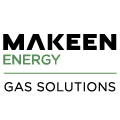Door-to-door delivery
Marking the 30th 40" container shipment of LPG filling machines to Indonesia
This May, we've sent our 30th container with LPG filling machines to Indonesia. That is a whopping 48 filling machines per container and thus worth celebrating! There is a strong demand for filling equipment in Indonesia and we want to ensure the shortest delivery possible which is only possible if we have the machines on stock. We call it door-to-door delivery because customers can pick up their filling machines in the morning, load them on their pickup trucks and install them before noon as opposed to the 10-12 weeks delivery time that is common for this industry.
The door-to-door concept
An extremely short delivery time for filling machines is paramount in Indonesia as the license to erect new plants, which is issued by the national gas company, Pertamina, runs out if valuable time is wasted on the extensive handling of customs documents and dealing with authorities. We have had to adapt our business model to this market condition and we are capable of delivering the equipment in due time before the licenses expire, because we have the machines on stock - shipped to Indonesia by the container load. For the customers, a quick delivery is appreciated and recognised as great service. Moreover, from a commercial point of view, it's a tangible competitive advantage to be able to deliver the machines this quickly.
Indonesia's kerosene to LPG conversion programme
The door-to-door concept is not only a competitive advantage, but also a means to support the Indonesian government’s goal to replace household consumption of the harmful kerosene with gas, as cooking with kerosene is very damaging to your health and to the environment. A conversion programme to switch from kerosene to LPG was initiated in 2007 and aims at decreasing the amount of subsidies for fuel therefore lifting some weight off the government's financial burden as well as securing Indonesia's demand for fuel and decreasing the misuse of subsidies.
The government has therefore issued approx. 500 licences to small fillers previously selling kerosene etc., and to others considering gas filling as a potential business area as an incentive to start more LPG filling plants, because subsidising LPG is more economical than to subsidies kerosene. To this day, the effort has been a success reducing the consumption of kerosene from 9.85 million kilolitre to 850,000 kilolitre. Moreover, the government is looking at a cost saving for fuel subsidies of about 14 billion euro so far. Besides government savings, LPG is a cleaner, more efficient and environmentally friendly fuel which helps households save money as well as obtain a cleaner lifestyle.
In 2009, the number of LPG cylinders on the Indonesian market had reached approx. 50 million - today, the number has risen to a staggering 89 million cylinders. This conversion is taking place almost all over Indonesia, except for the Eastern part of Indonesia and small and very remote islands.
Typically, a 40" container sells out in about 3-4 months and we're now selling our 30th. That’s more than 1,200 machines from the door-to-door concept - which represent about a third of our turnover in Indonesia. Customers come to us when they need new equipment quickly because they know we're able to deliver today. That's why we call it door-to-door.







